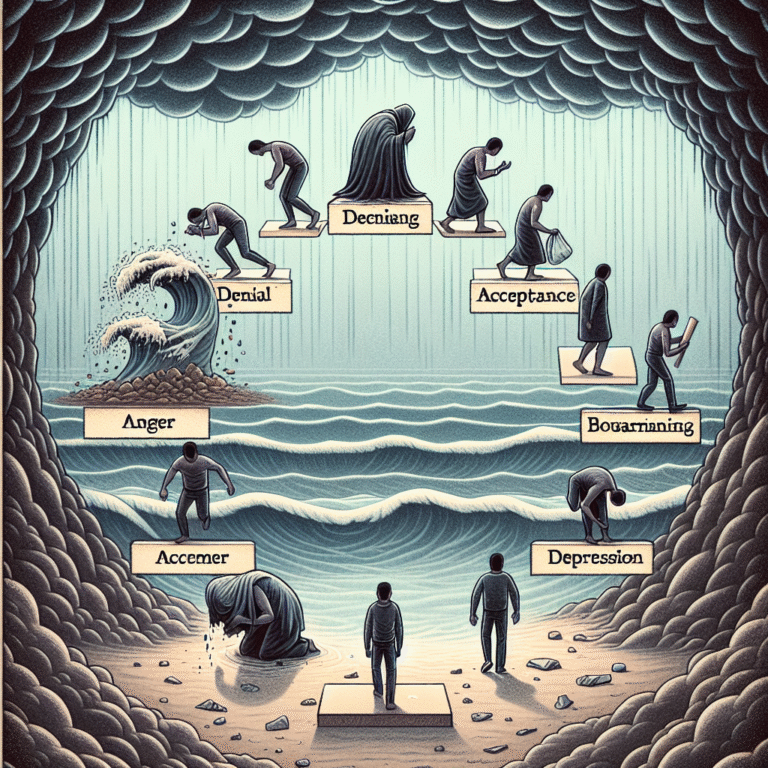
From Sadness to Fatigue: Key Symptoms of Depression Explained
Introduction
Have you ever felt engulfed by an overwhelming sense of sadness, only to be followed by a pervasive fatigue that makes it difficult to get out of bed? You’re not alone. The journey from sadness to fatigue is a common thread woven through the lives of many individuals battling depression. Understanding the key symptoms of depression is essential not just for those affected, but also for family and friends who may be seeking to support their loved ones. In this article, we will delve deeply into the nuanced world of depression, exploring its key symptoms and how they manifest from a state of sadness to debilitating fatigue, offering insights that can lead to greater awareness and understanding.
The Spectrum of Depression: An Overview
Depression is often misconceived as merely a prolonged state of sadness. While sadness is a significant component, depression is a multifaceted condition that can manifest in various ways. This article seeks to elucidate these variations by highlighting specific symptoms that range from emotional to physical fatigue.
What is Depression?
Depression, clinically known as Major Depressive Disorder (MDD), is a mental health condition characterized by persistent feelings of sadness, hopelessness, and a lack of interest or pleasure in activities once enjoyed. The World Health Organization (WHO) notes that depression affects more than 264 million people globally, making it one of the leading causes of disability worldwide.
Key Symptoms: From Sadness to Fatigue
Understanding the symptoms of depression is crucial for early diagnosis and intervention. This section outlines the key symptoms of depression, illustrating how they may transition from deep sadness to profound fatigue.
1. Persistent Sadness
Description:
Persistent sadness is often the most recognizable symptom of depression. It’s a feeling of despondency that lingers for weeks or even months.
Case Study:
Consider Sarah, a 34-year-old woman who recently experienced a traumatic breakup. Instead of bouncing back after a couple of weeks, Sarah found herself trapped in a cloud of sadness for six months. This ongoing emotional turmoil hindered her ability to engage in her usual hobbies and maintain relationships.
Relevance:
Sarah’s story underscores the importance of recognizing sadness as more than simply "feeling blue." It is a critical warning sign that may indicate the need for professional help.
2. Loss of Interest in Activities
Description:
The loss of interest, or anhedonia, manifests as a decreased capacity for joy in activities that once provided happiness, such as hobbies, socializing, or even work.
Case Study:
John, a passionate musician, began to neglect his guitar after experiencing significant job stress. Over time, the joy he once derived from music faded, leading to a further sense of isolation.
Analysis:
John’s case illustrates how depression often strips away the joy from our passions, making it crucial to track shifts in interest and energy levels.
3. Fatigue and Low Energy
Description:
Fatigue is not just physical exhaustion; it’s an all-encompassing lack of energy that can affect both mental and emotional states.
Table 1: Distinctions between Physical Fatigue and Mental Fatigue
| Symptom | Physical Fatigue | Mental Fatigue |
|---|---|---|
| Causes | Sleep deprivation, illness | Overthinking, emotional strain |
| Duration | Short-term after exertion | Long-term or chronic |
| Impact | Muscle weakness | Reduced concentration |
Case Study:
Emily, a graduate student juggling classes and work, felt drained by her demanding schedule. Upon further examination, it was revealed that she was dealing with unrecognized depression, which contributed to her extreme fatigue.
Relevance:
Emily’s situation sheds light on the often-overlooked connection between mental health and fatigue, suggesting that chronic fatigue may be symptomatic of an underlying issue rather than mere lifestyle choices.
4. Changes in Sleep Patterns
Description:
Depression can lead to significant changes in sleep habits, including insomnia, hypersomnia, or disrupted sleep.
Case Study:
Mike, a 29-year-old engineer, noticed that he was either sleeping excessively or unable to sleep at all. These fluctuations not only made him irritable but also fueled his feelings of hopelessness.
Analysis:
This case emphasizes the role of sleep disturbances as both a symptom and exacerbator of depression, in part due to hormonal imbalances that affect mood.
5. Cognitive Impairment
Description:
Cognitive symptoms of depression include difficulties with concentration, decision-making, and memory.
Case Study:
Jessica found it increasingly difficult to focus on her tasks at work. Short projects became overwhelming, resulting in decreased productivity and frustration. Her employers noticed her struggle but couldn’t pinpoint the cause.
Relevance:
Jessica’s example illustrates that cognitive impairment is a significant, but often unrecognized, symptom of depression, which can lead to professional challenges and impact one’s self-esteem.
6. Feelings of Worthlessness or Guilt
Description:
Individuals with depression often experience pervasive feelings of worthlessness, excessive guilt, or self-blame.
Case Study:
Tom, after a failed project at work, spiraled into feelings of inadequacy. He perceived the failure as a reflection of his self-worth, leading to further depressive symptoms.
Analysis:
Tom’s experience highlights the need to challenge negative self-perceptions that often accompany depression, serving as a reminder that failure is a part of life and not a definitive measure of one’s value.
From Understanding to Action: The Path Forward
Awareness and acknowledgment of depression’s symptoms can be the first steps towards recovery. If you or someone you know is experiencing these symptoms, consider these actionable insights:
- Seek Professional Help: Therapy and medication can be highly effective in managing depression.
- Establish a Routine: Involve regular activity to combat feelings of fatigue and restore energy levels.
- Engage in Self-Care: Activities that promote physical and mental well-being can act as powerful tools against depression.
- Connect with Others: Sharing experiences with trusted friends or support groups can alleviate feelings of isolation and guilt.
Conclusion: Shifting from Sadness to Hope
While navigating the complex landscape of depression—from sadness to fatigue—can be daunting, it’s essential to remember that there is hope and help available. By understanding the key symptoms of depression, you empower yourself and those around you to seek the help and support necessary for healing.
In moments of struggle, remember that your feelings are valid and that recovery is possible. Take the first step towards understanding, whether it’s reaching out for help or simply learning more about the condition. Together, we can foster awareness and pave the path towards healthier minds and brighter futures.
FAQs
1. What are the most common symptoms of depression?
Common symptoms of depression include persistent sadness, loss of interest in activities, fatigue, changes in sleep patterns, cognitive impairments, and feelings of worthlessness.
2. How is depression diagnosed?
A mental health professional can diagnose depression through clinical interviews, questionnaires, and assessments that evaluate mood, behavior, and emotional health.
3. What options are available for treating depression?
Treatment options for depression include therapy, medication, lifestyle changes, and support groups. A combination of these approaches is often the most effective.
4. Can depression be prevented?
While not all depression can be prevented, maintaining a supportive environment, practicing self-care, and seeking help during tough times can reduce the likelihood of developing depressive symptoms.
5. When should I seek help for depression?
If you or someone you know is experiencing persistent sadness, fatigue, or any combination of depressive symptoms that interfere with daily life, it’s essential to seek professional help promptly.
This comprehensive article on "From Sadness to Fatigue: Key Symptoms of Depression Explained" not only provides valuable insights but serves as a resource for those navigating the complexities of depression. By embracing understanding and empathy, we can foster a society that supports mental health and well-being.











